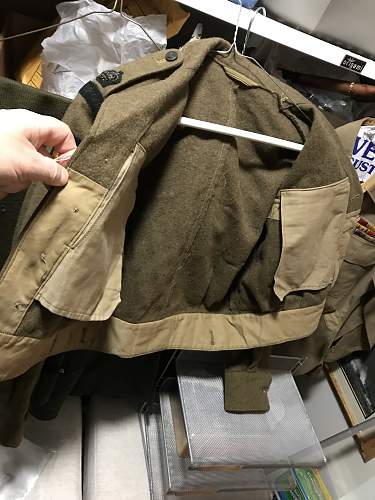I am unfamiliar and very new with my knowledge with the British Battledress. Reading various posts have help me quite a bit but I would like to get some expert opinions, thoughts and knowledge on this new subject. I recently picked up this, what i believe is a British Battledress. I believe the Black Cat patch is a version of the 56th Infantry Division. But I don't know the blue patch, with the Gold Crown represents.
It also appeared that the size/date tag next to the Broadarrow 1280 (or 1290)stamp has been removed.
I would like some thoughts as to the authenticity of this jacket, the patches, Rifle Brigade Rockers and the year/WW2/Post WW2 etc?. Also in one of the pockets, I found an unknown "Crown" patch.
Any other information about this Battledress would be greatly appreciated.
ATTACH=CONFIG]1153701[/ATTACH]












 .
.



Bookmarks